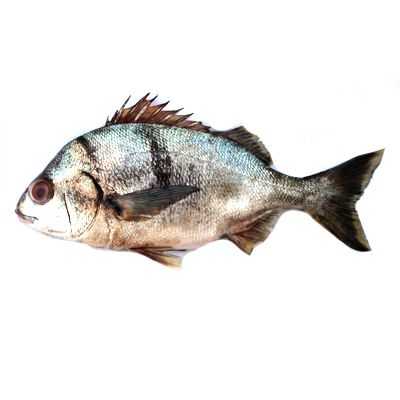Xantic Sargo

Species Details
Anisotremus Davidsonii
Haemulidae
Perciformes
Sandy Bottom, Rocky, Coral Reef
6 - 11 lbs.
8" - 22"
Xantic Sargo (Anisotremus davidsonii) Fish Description
Not to be confused with the Sargo (which is from the seabream family), the Xantic Sargo (Anisotremus davidsonii) is a member of the grunt fish family that produces “grunting” sounds by rubbing together their flat teeth plates.
The Xantic Sargo can be identified through its somewhat elongated body, elevated and compressed back, and pouty lips. Its body is mostly silver except for the single brown or black vertical stripe on each side and the rather bronzy tinge on the top side of its prominently white lateral line. As for the fins, the caudal fin is slightly forked and the two-segment dorsal fin is spiny, both of which are colored dark brown to black. Its pectoral, pelvic, and anal fins are much lighter in color.
Diet and Size
The Xantic Sargo is a known nocturnal benthic feeder. This means that they are mostly inactive during the day, typically found close to rocks and other underwater structures for shelter. At night, however, they would spring into action as they look for food near or over sandy bottoms, kelp and seagrass beds of rocky coastal reefs. They mostly feed on crustaceans, mollusks, and bryozoans. As most grunts, the Xantic Sargo is not a large fish and can only reach a maximum length of a little less than two feet, weighing around ten to eleven pounds.
Interesting Facts
- Although they could attain a maximum length of twenty-two inches, most fully grown Xantic Sargos are just eleven inches long.
- Xantic Sargos are sometimes called Sweetlips because of their rather large pouty lips.
- They can produce a loud sound by grinding their flat teeth plates together.
- They are commonly seen hovering motionless over reefs during the day.
- Although they are mostly benthic fishes, they spawn and lay eggs in the pelagic zones or mid-waters.
- Juveniles usually stay near the shores and form schools.
- Juveniles have dark horizontal lines on their bodies to help them blend with their environment.
- Adults are sometimes seen swimming in schools but they are mostly solitary until spawning season.
- Aside from humans, known predators of Xantic Sargo include snappers, groupers, lizardfishes, Spanish mackerel, sharks.
- The Xantic Sargo is not fished commercially but it’s a popular recreational gamefish.
- Anglers target Xantic Sargo for their lean and flaky meat that is said to be rather tasty.
Fishing Techniques
Yes, the Xantic Sargo is a small fish but it can be moderately difficult to catch as they mostly stay near the bottom, often in reefs and other rocky structures underneath the water. They are also known to be talented bait stealers, thanks to their speed and small mouth.
That said, this small fish can easily be landed once you hook one. Best bait to use is strips of fresh fish or shrimp. Just make sure to use a small hook and make each piece as tiny as possible so it won’t be able to steal your bait without having its mouth hooked. For a tiny fish such as this, you will need a light rod paired with a stretchy line so that you’ll be able to better feel the fish’s attempts to steal the bait. Lastly, you should fish for them over reefs or sandy and muddy grass beds at night as they are actively hunting at night time.
Habitat and Distribution
The Xantic Sargo is endemic in the coastal waters of Eastern Central Pacific—from Santa Cruz in central California, USA to southern Baja California, Mexico, as well as within the waters of the Gulf of California. The fish also prefers reefs and other rocky environments, often near kelp beds where they mostly live and forage for food. With that, you can fish for them inshore—from piers, jetties, or even on a beach where there’s a kelp bed nearby.







